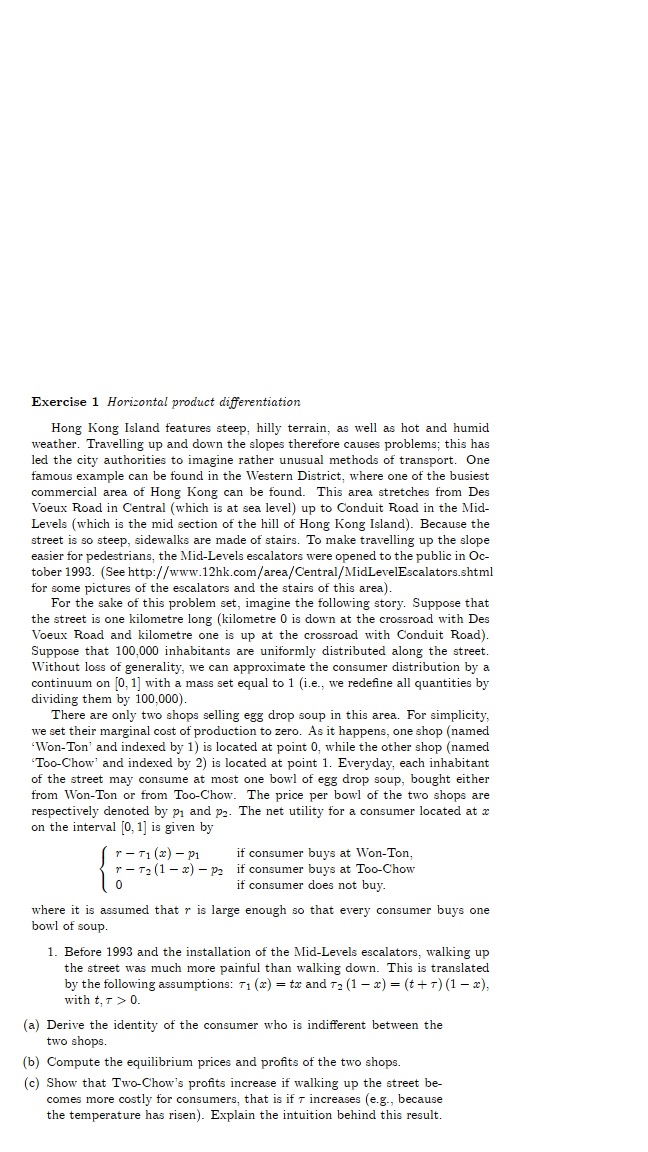Exercise 1 Horizontal product differentiation Hong Kong Island features steep, hilly terrain, as well as hot and humid. weather. Travelling up and down the slopes therefore causes problems; this has led the city authorities to imagine rather unusual methods of transport. One famous example can be found in the \"'estern District, where one of the busiest commercial area of Hong Kong can be found. This area stretches from Des Voeux Road in Central [which is at sea level) up to Conduit Road in the M id Levels (which is the mid section of the hill of Hong Kong Island). Because the street is so steep, sidewalks are made of stairs. To malne travelling up the slope easier for pedestrians, the MidLevels escalators were opened to the public in Co tober 1993. (See http:,",r'www.l2hk.com fareafCentralfh-IidlevelEscalatorsshtml for some pictures of the escalators and the stairs of this area}. For the salne of this problem set, imagine the following story. Suppose that the street is one kilometre long (kilometre 0 is down at the crossroad with Des Voeux Road and kilometre one is up at the crossroad with Conduit Road]. Suppose that 100,001] inhabitants are uniformly distributed along the street. \"."ithout loss of generality, we can approximate the consumer distribution by a continuum on [0,1] with a mass set equal to l (i.e._. we redene all quantities by dividing them by 100,000). There are only two shops selling egg drop soup in this area. For simplicity, we set their marginal cost of production to zero. As it happens, one shop [named \"NonTori" and indexed by 1) is located at point 0, while the other shop [named 'TocyC'how" and indexed by 2) is located at point 1. Everyday, each inhabitant of the street may consume at most one bowl of egg drop soup, bought either from 1NonTon or from 'IboChow. The price per bowl of the two shops are respectively denoted by 311 and P3. The net utility for a consumer located at :r: on the interval [0,1] is given by r T1 [1) 101 if consumer buys at \"EonTori, r 73 [1 1:) m if consumer buys at TomChow I] if consumer does not buy. where it is assumed that r is large enough so that every consumer buys one bowl of soup. 1. Before 1993 and the installation of the MidLevels escalators, walking up the street was much more painful than walking down. This is translated by the following assumptions: 7'; {x} = tar and 1': (l I} = (t + r] [l 2:), with t, :r > 0. (a) Derive the identity of the consumer who is indifferent between the two shops. (b) Compute the equilibrium prices and prots of the two shops. (c) Show that TwoChow's prots increase if walking up the street be comes more costly for consumers, that is if'r increases (e.g., because the temperature has risen]. Explain the intuition behind this result







